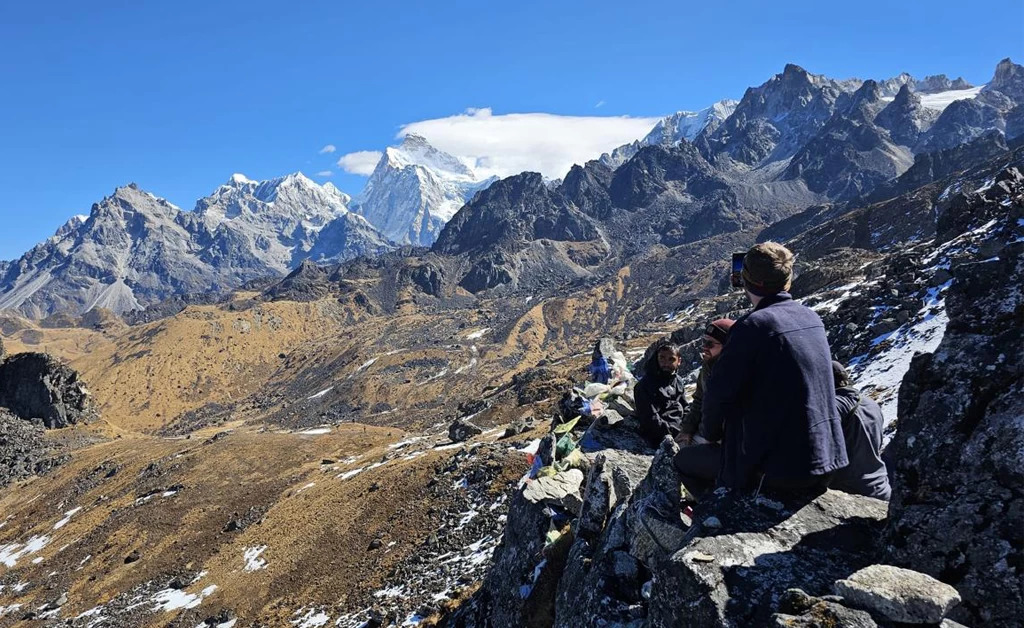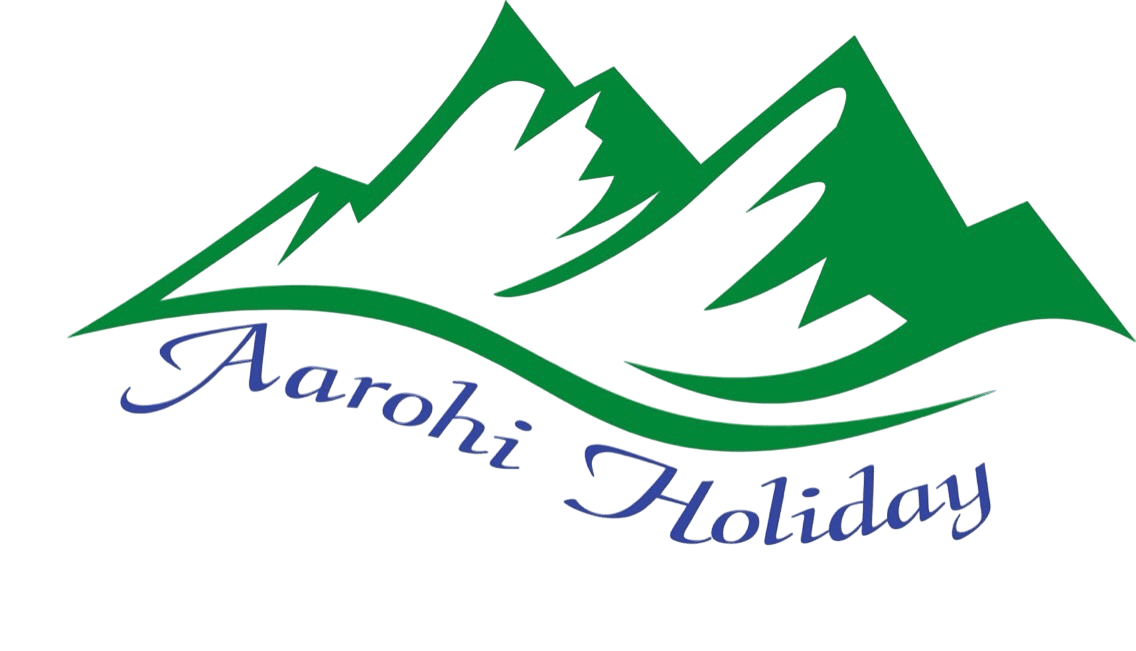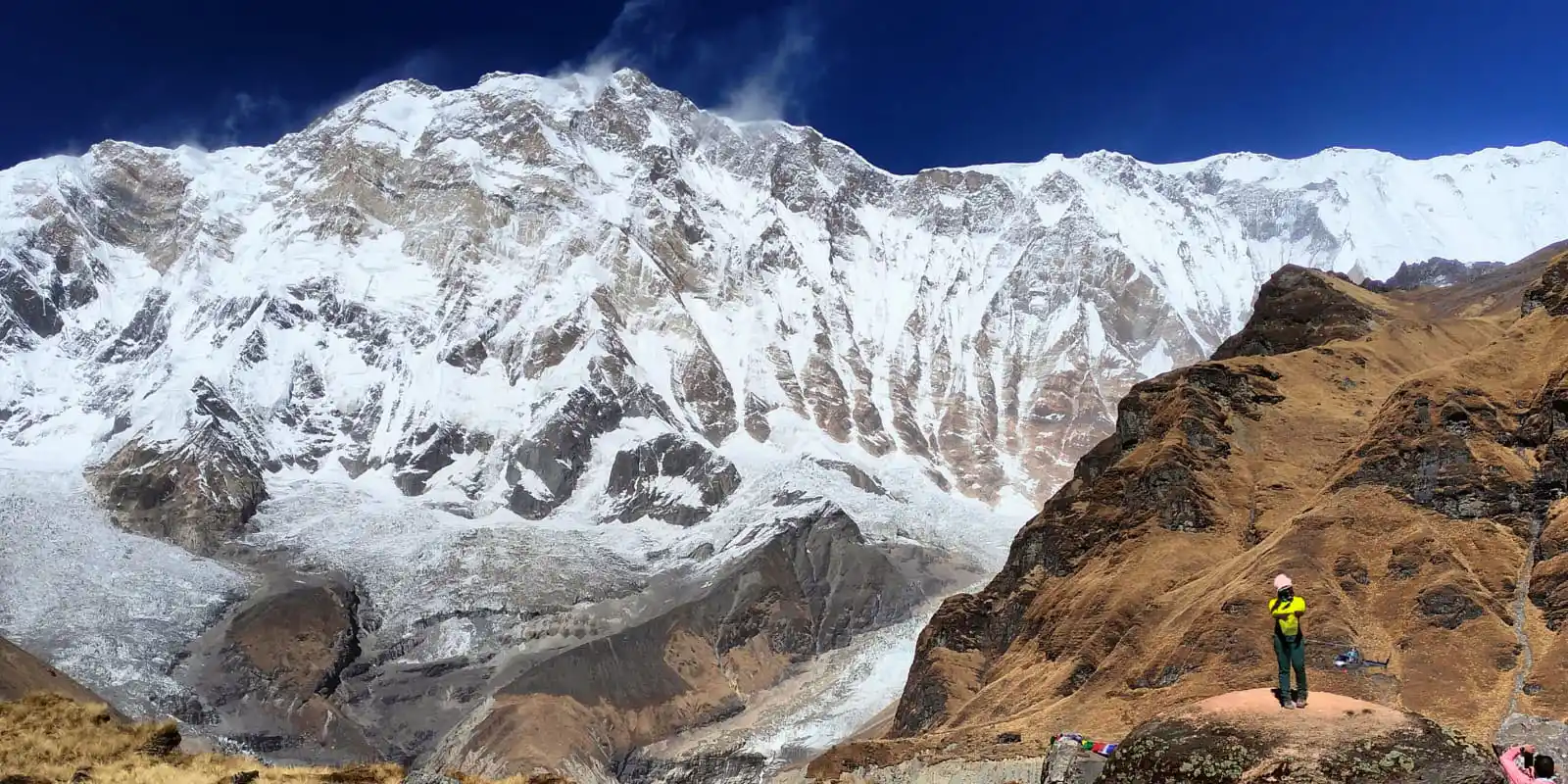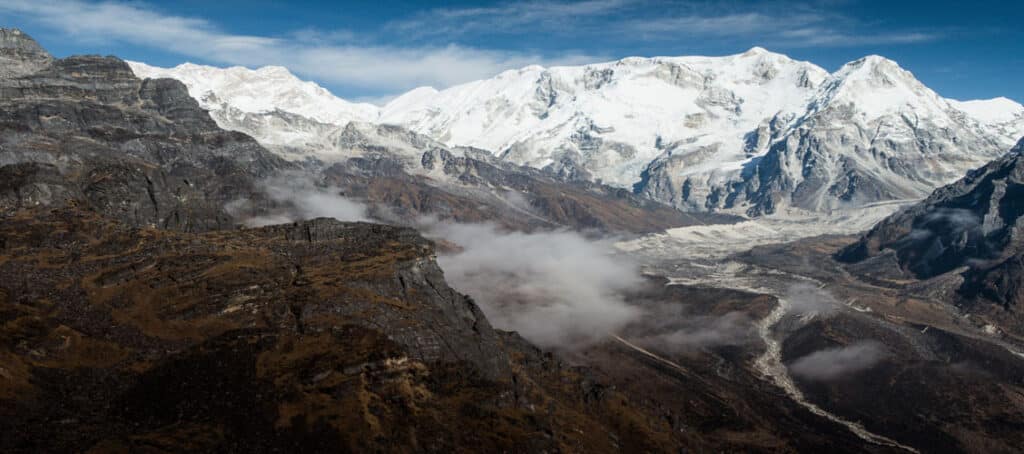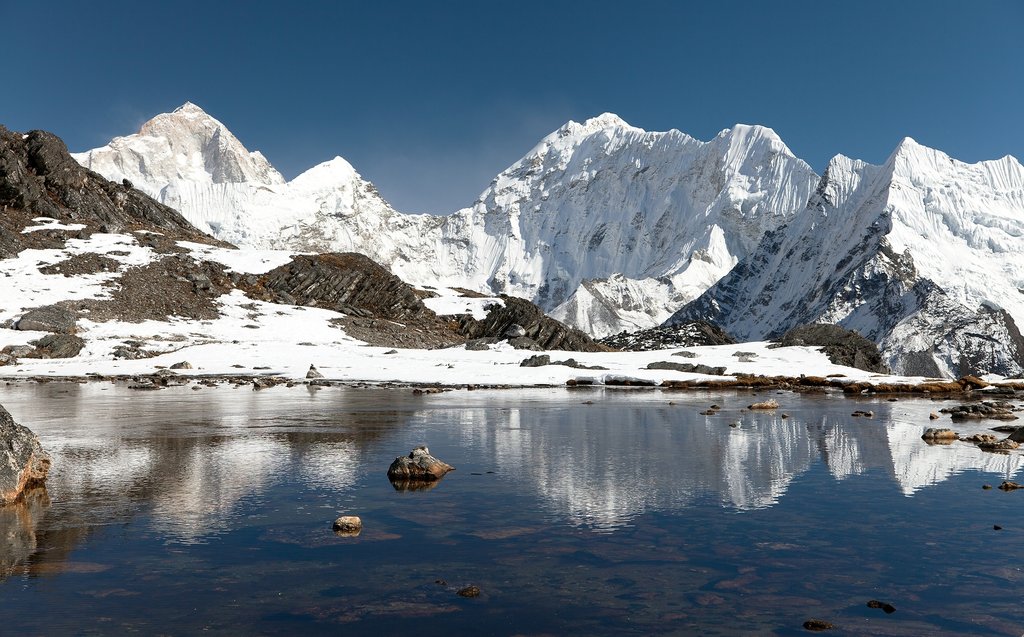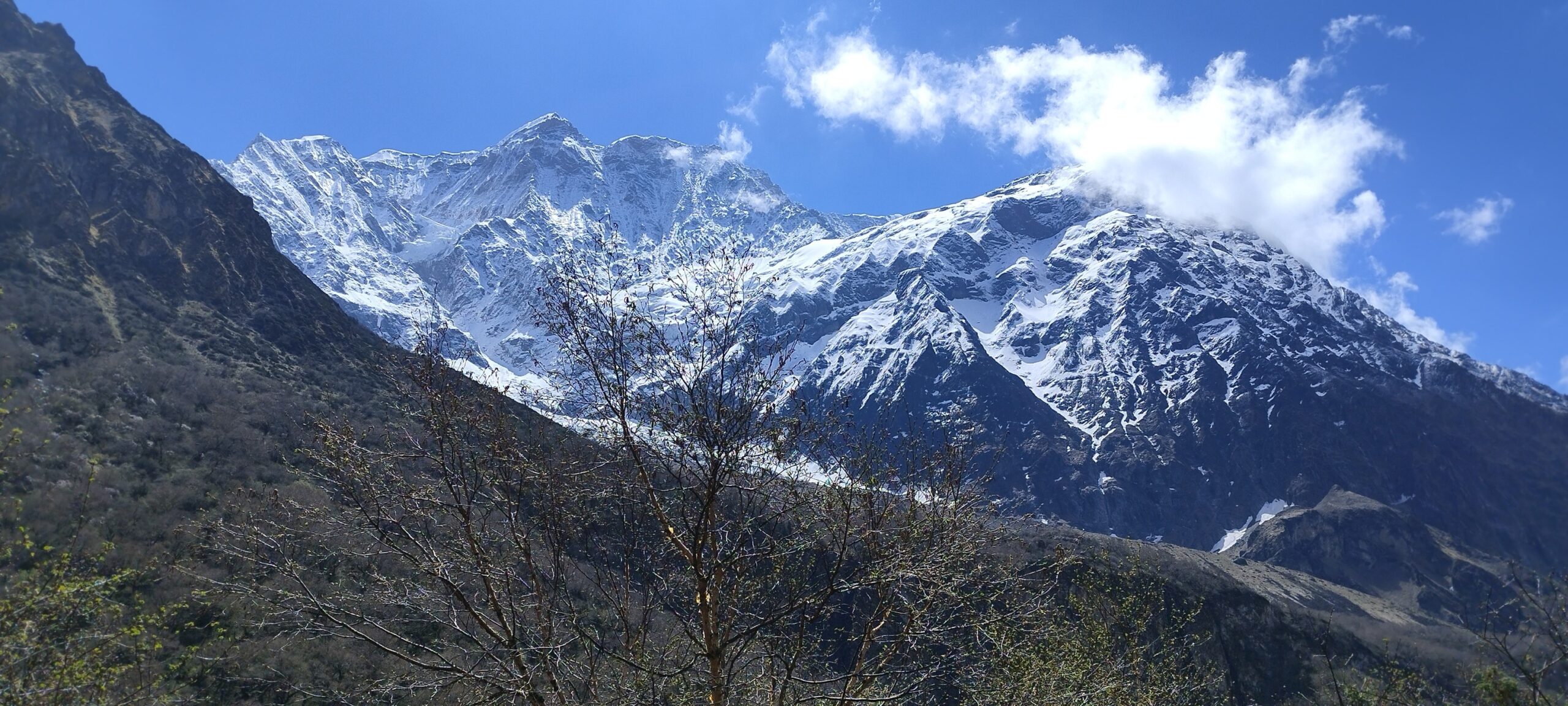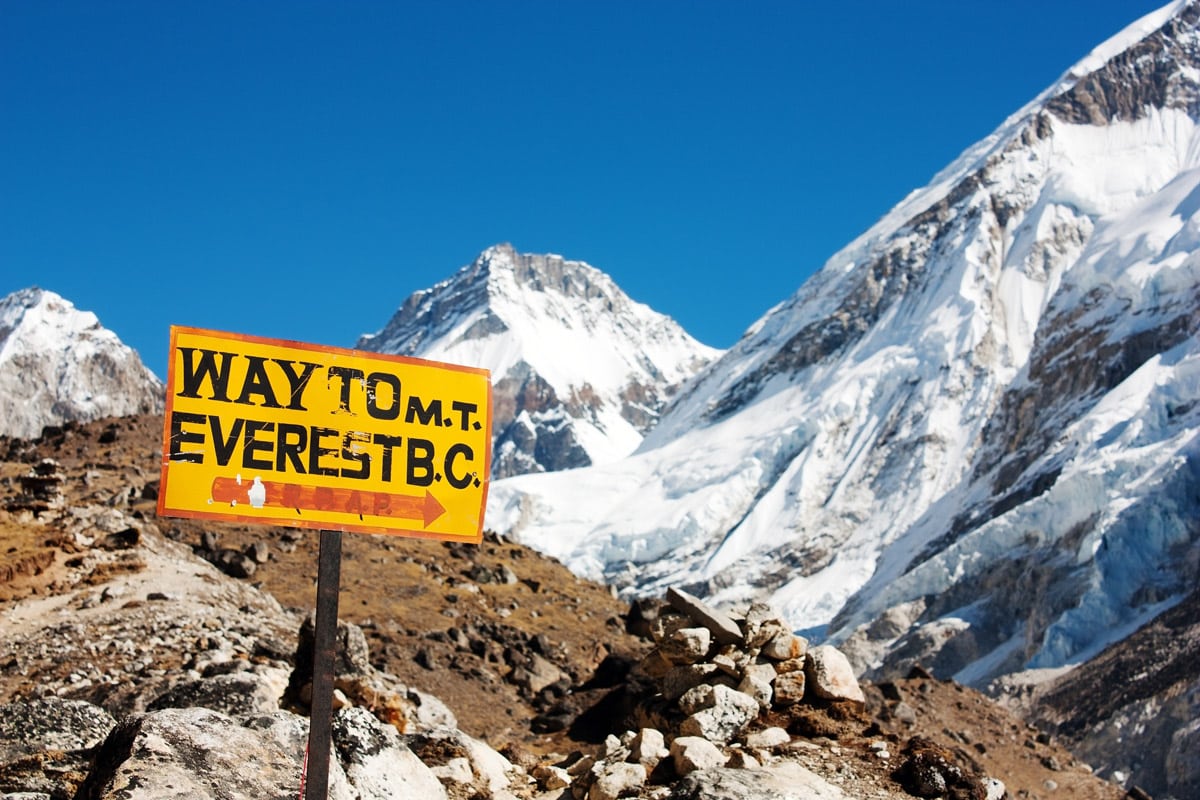Accommodation during Kanchenjunga Base Camp Trek
- In Kathmandu we provide comfortable accommodation in 3-star hotels with breakfast on a twin-sharing basis.(Private room accommodation can be organized at an extra cost)
- In Bhadrapure we Provide Comfortable simple Guest house with full Board on twin- sharing Basice.((Private room accommodation can be arranged at an extra cost)
- During the trek, we provide very basic and limited accommodation on a twin-sharing basis. Hot showers, Wi-Fi, and device charging are available at an additional cost
Meals and Drinking water on Kanchenjunga Base Camp Trek
During the trek, you’ll enjoy three nutritious meals a day: breakfast, lunch, and dinner at local teahouses. The menu features traditional Nepali dishes like dal bhat, along with noodles, soups, pancakes, and eggs. Freshly prepared meals keep you energized for the high-altitude trek.
Staying hydrated is essential. Bottled water is available, but we recommend reusable bottles. Our guides provide water purification tablets to ensure safe drinking water throughout your journey.
Required Permits for Kanchenjunga Base Camp Trek
For the Kanchenjunga Base Camp Trek, you’ll need the Kanchenjunga Conservation Area Permit (KCAP) and a Restricted Area Entry Permit cost: USD 20 per person, per week. Don’t worry, we handle all the paperwork and fees so you can focus on enjoying your trek.
- Kanchenjunga Conservation Area Permit : NPR 2000 per person
- Kanchenjunga Restricted Permit: USD 20 per person, per week
Best Time for Kanchenjunga Base Camp Trek
The best seasons for the Kanchenjunga Base Camp Trek are spring (March to May) and autumn (September to November). These months offer stable weather, clear skies, and spectacular Himalayan views. Spring treats trekkers to blooming rhododendrons and vibrant wildflowers, while autumn brings crisp air and excellent visibility.
Winter (December to February) is colder with snow at higher altitudes, making the trek quieter for those prepared for the chill. The monsoon season (June to August) is less favorable due to heavy rain and possible landslides. Whenever you choose to go, we ensure your trek is safe, comfortable, and unforgettable.
Kanchenjunga Base Camp Trek Difficulties
The Kanchenjunga Base Camp Trek is one of the most challenging adventures in the Himalayas, best suited for experienced trekkers. It’s a demanding journey, but what makes our 24-day trek special is the slow and well-paced itinerary we’ve designed. This approach allows you to fully immerse yourself in the mountains while giving your body time to adapt.
While it’s not a comfortable trek, the gradual pace ensures you can savor every twist and turn of the trail. Good physical fitness and prior trekking experience are essential. We recommend preparing with day hikes or easier Himalayan treks before taking on this ultimate challenge.
If you’re an experienced trekker ready to push your limits, we invite you to join our 24-day adventure through the wild and remote Kanchenjunga region. Our expert team will guide you every step of the way and make sure you’re fully prepared for this unforgettable journey.
Altitude Sickness and Prevention on the Kanchenjunga Base Camp Trek
The highest point you’ll reach on the Kanchenjunga Base Camp Trek is 5,143 meters (16,874 ft). You’ll spend around 11 days above 2,500 meters, where the thinner air puts extra strain on your body and increases the risk of altitude sickness. As you gain elevation, oxygen levels drop, and it’s common to feel less hungry or not want to drink much water.
To stay healthy, it’s essential to eat nutritious meals and stay hydrated, even if you don’t feel like it. Our team will regularly check in, remind you to drink water, and ensure you’re eating well.
Altitude sickness is common but can become serious if symptoms are ignored. In rare cases, trekkers may need to be evacuated, ending the trek early. To help prevent this, our itinerary includes acclimatization days at key points, giving your body time to adjust before moving higher. With the right pace, rest, and preparation, you can safely enjoy this incredible high-altitude adventure.
Travel Insurance for Kanchenjunga Base Camp Trek
The Kanchenjunga Base Camp Trek takes you into one of the most remote and high-altitude regions of Nepal, making travel insurance an essential requirement. Your policy must include emergency air evacuation coverage up to 6,000 meters, and we also recommend adding medical expense coverage for extra peace of mind.
Trekking to Kanchenjunga Base Camp is a true Himalayan adventure, but its remoteness and altitude come with inherent risks. The right travel insurance helps manage these risks, ensuring we can guide you safely through one of the most untouched regions of the Himalayas.
Kanchenjunga Base Camp Trek Itinerary
Your adventure begins in Kathmandu, where we prepare for the trek and explore the city’s UNESCO World Heritage sites. A short flight to Bhadrapur followed by a scenic drive to Taplejung brings us close to the starting point. The journey on foot begins from Mitlung, gradually leading through remote villages such as Chirwa, Sekathum, Amjilosa, Gyabla, Ghunsa, and Khambachen.
Along the way, you’ll pass lush forests, cascading waterfalls, suspension bridges, and peaceful highland settlements. We take an acclimatization day in Ghunsa before continuing to Lhonak and ascending to the spectacular Kanchenjunga North Base Camp (Pangpema, 5,143m), where breathtaking views of the Kanchenjunga range await.
From there, we retrace our steps to Ghunsa, cross the Sele Le Pass, and head towards Cheram to visit the South Base Camp at Ramche. The descent takes us through Tortong, Yamphudin, Khebang, and Tharpu, before driving back to Bhadrapur and returning to Kathmandu. This 24-day journey offers a perfect blend of natural beauty, cultural encounters, and high-Himalayan adventure.
Kanchenjunga Base Camp Trek Cost
The cost of the Kanchenjunga Base Camp Trek varies depending on the season, group size, and service preferences. Our 24-day trek is priced at USD 2,500 per person, covering all essential services from your arrival in Kathmandu to the end of the journey. This package is designed to provide a safe, comfortable, and well-organized adventure in one of Nepal’s most remote trekking regions.
The price is based on a minimum of one person. For group bookings, we offer attractive discounts ranging from 5% to 10%, and the group leader can join the trek free of cost. With transparent pricing and no hidden fees, Aarohi Holiday ensures exceptional value for an unforgettable Himalayan experience.
Important Notes for Kanchenjunga Base Camp Trek
- This itinerary includes round-trip flights from Kathmandu to Bhadrapur.
- Porters can carry up to 20kg each, but since we provide one porter for every two trekkers, we recommend packing no more than 10kg per person. You’ll be provided with a durable duffle bag to carry your gear comfortably throughout the trek.
- There are no ATMs on the Kanchenjunga Base Camp Trek, so carry enough cash from the city before starting your trek.
- Meals are included throughout the trek. HoweveMeals and entry fees for sightseeing in Kathmandu are not included in the trek package.r, extra charges apply for hot showers and charging electronic devices at teahouses and lodges.
- Drones require hard-to-get permits, so it’s best not to bring.
Fitness Preparation for the Trek
The Kanchenjunga Base Camp Trek is both rewarding and challenging. Each day involves long hours of walking with many ascents and descents on rugged trails. As you gain altitude, the air becomes thinner, and the cold climate can add to the difficulty. Without proper fitness, this trek can feel overwhelming.
Success on this journey requires not only physical strength but also mental readiness. The Kanchenjunga region is remote, and teahouse facilities are very basic. To prepare, we recommend regular cardio exercises such as jogging, cycling, swimming, or brisk walking, combined with strength training to build endurance and core stability. Short hikes or practice treks before the journey can also help you adapt to long walking days. Consistent training for at least 6–8 weeks before the trek will make the adventure more enjoyable and manageable.
A Typical Day on the Trail
A typical day on the Kanchenjunga Base Camp Trek involves 6 to 7 hours of trekking through rugged trails, steep ascents, and descents, surrounded by forests, rivers, and breathtaking mountain views. Your morning begins with a warm breakfast before setting out on the trail, with steady walking and regular breaks to rest, take photos, and enjoy the scenery. Along the way, you may pass through remote villages where you can observe the traditional lifestyle and unique culture of the local communities.
Evenings are usually spent in simple teahouses that offer basic facilities and hearty meals. This is your time to relax, share stories with fellow trekkers, and prepare for the next day’s journey. The peaceful atmosphere of the mountains, combined with the simplicity of teahouse living, makes each day both rewarding and memorable.
Arrival Instruction
Upon your arrival at Tribhuvan International Airport, our company representatives are stationed to welcome you to the country. We request you to carefully look for your name being held by our representatives following the events upon landing. The representatives are responsible to escort you to your hotel in Kathmandu. You will see men offering you to carry luggage and take you to your destination as you exit the airport. We request you pay no attention to these people and follow the designated representatives and follow their instructions. You will also need to keep an eye on your luggage and belongings to avoid any complications.
Nepal Visa Entry Procedure
For entry into Nepal, there are visa requirements everyone (except Indian nationals) must complete before being allowed to pass through immigration. This is for air travel as well as overland transportation. Most visitors may obtain a visa to enter Nepal, however, there are exceptions.
- 15-day single entry: US $30
- 30-day single entry: US $50
- 90-day multiple entries:US $125
Please have a passport valid for at least 6 months from the time of entry, and have cash ready, preferably in US dollars, though there are other currencies Nepal Immigration accepts. If you are entering via overland, you must have US cash and 3 passport photos. For arrival by air, the kiosks at the airport take your picture for you. For the most up to date list of exceptions for visa on arrival or to obtain the most current visa information, visit the Nepal Department of Immigration website
